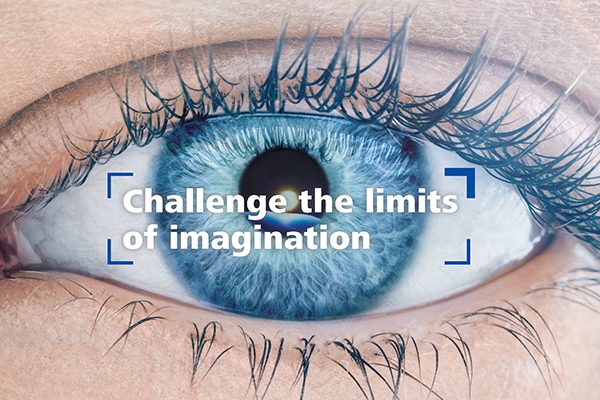Optometrist & Novelist Ajay Kr Bhootra talks about the techniques that can help opticians sell Progressive Addition Lenses in a better way
I have experience of selling high value Progressive Addition Lenses as well as coaching and preparing salespeople to do the same for my optical retail stores. My learning from these experiences is what helped me put together useful information for opticians in my book ‘Race For Space’.
 In the article below, I have shared some of that information to help opticians understand the importance of a right approach to sell Progressive Addition Lenses.
In the article below, I have shared some of that information to help opticians understand the importance of a right approach to sell Progressive Addition Lenses.
Every time a lens manufacturer introduces a new brand of Progressive Addition Lens, most salespersons who participate in the launch programme go back with an enigma, “Oh no, one more new brand, how to convince the customer to buy?”
Though it is good for business, it also creates a new set of difficulties for salespeople who find it hard to engage their potential prospects while selling those new progressive lenses.
Even the experienced fumble and the result is they end up making errors as well as losing out on the customer.
Progressive Addition Lenses: Preferred Choice
Over the past few decades, Progressive Addition Lenses have emerged as the most popular option for presbyopic patients. They offer a cosmetic and optical advantage over conventional bifocal lenses. But at the same time it also carries certain optical limitations inherent to its design.
Advancements in manufacturing technology and unique design approaches have significantly improved the progressive lens designs and their visual performances. The flip side of this popularity is that there are innumerable progressive lens design options in the market. Though researchers can check and analyse these typical design features, it is still impossible for people on the retail front to see and understand all of this.
Mistakes you need to avoid
Here is a look at some of the common mistakes that opticians tend to make when it comes to selling Progressive Addition Lenses.
The whole idea to highlight these mistakes is to ensure that you as the optician are well aware of these errors and consciously take the effort to avoid them.
Overselling: While demonstrating the width of clear vision zone, opticians find it difficult to keep the customer’s expectations to the realistic level. Over expectations result in immediate dissatisfaction and always works against repeat sales.
The customer understands that he has paid a humongous amount of money and so he will get a magical wonder of material that he will put on his eyes and the world will be seen as natural as without lenses.
 Random categorisation: The brand categorisation is based upon price range and not by design features and application. The random categorisation that opticians demonstrate is totally based upon their own conceptions which have no connection with the true lens design features. What it means – a knowledge based approach is essential to sell high value Progressive Addition Lenses.
Random categorisation: The brand categorisation is based upon price range and not by design features and application. The random categorisation that opticians demonstrate is totally based upon their own conceptions which have no connection with the true lens design features. What it means – a knowledge based approach is essential to sell high value Progressive Addition Lenses.
Art of presenting the product: I am surprised to see that many salespeople just plod along the same well-trodden path even while selling high end progressive lens brand, emphasising about the least distorted area at the two sides.
Well, it’s always good to be truthful and transparent to the customer, but it doesn’t always go with customer’s psyche. You need to understand how human minds work.
When a prospect pays for high end product, he would not like to listen to anything that sounds negative. That’s the first obstacle in selling high end progressive lenses – lack of creativity. Truth disclosure is an art in sales. As a professional salesperson you need to learn the art of truth disclosure. A great salesperson always keeps his customer guessing with his intelligent choice
of words.
Show it all: The fourth and the most critical mistake that a salesperson does is he opens up the huge menu of progressive lenses in front of his customer that shows several lens designs at different price bands in multiple brands.
When a customer looks at several options at different price bands, the first question that he intuitively asks is the reason for the price difference.
The result – the salesperson is lost into selling prices instead of selling values or attributes of lenses. Remember people are ready to pay more if they think the product is truly special and unique. What it means is that presentation of the product is the key. Selling on values and attributes need a balance of confidence, personal rapport and a bit of homework.
And it is more difficult today when the technology has given them greater access to information. Trust me customers are irrational; they often take buying decision when they are tempted.
 Non-discovery of visual needs: Another common mistake that is seen is that no salesperson discuss and discover the visual needs of the customer before advising the appropriate progressive lens design.
Non-discovery of visual needs: Another common mistake that is seen is that no salesperson discuss and discover the visual needs of the customer before advising the appropriate progressive lens design.
In fact most salesperson are not trained to understand the visual requirement and correlate the visual need to the progressive lens design. Of course there are limitations of tools and equipments to implement. This is where the lens manufacturers have a daunting task.
They must look at this area and find out some methods to train salespeople in a manner that they can apply consultative selling approach in true sense for high value progressive lens dispensing.
Misconception: Premium is only for expensive frames – A common mistake that many salespeople do when they sell multiple pairs to a customer.
The common scenario is the premium progressive lens is dispensed with a premium frame that the customer buys for occasional use and an economical progressive lens is dispensed with a frame that he is going to use on regular basis to meet his daily visual needs.
Well, this sort of practice philosophy may be very good when you sell garments, shoes or other such products. But they are not very effective for spectacle lenses which are sold on medical prescription which has a life span.
What actually happens is the customer continues using the economical progressive for a longer period of time without having major difficulties and occasionally when he uses the premium progressive lenses, he doesn’t find significant difference. Thus, when he purchases a new eyewear with the new lenses because his lens prescription has changed, he doesn’t feel like doing that loud ‘yaaaay’ for high value progressive lens.
Over-confidence: This is another common mistake that is seen with many salespeople when their customer asks for a common request, “Suggest something similar in other brands.” Relying more on their own opinion and gut feel they quickly categorise the similar price bracket lens design.
Often this leads to sloppiness. It’s important to remember that each progressive lens design is unique. Comparing the two brands or designs is the job of researchers, not yours.
Opticians can make an attempt to answer the question in terms of their experience with their consumers, provided they have done some comparative studies on the visual performance of various lens designs. Else, it’s wise to say that each lens design is unique and serves a specific purpose.
Tools To Sell Progressive Lenses
In order to differentiate one design from another, most salespeople continue to stay rooted to the traditional modes of customer engagement. They prefer relying on describing the width of clearer vision area through different zones of the progressive lenses using pen and paper, and then segregating different lens designs into different categories based on their prices – costlier lens brands demonstrating the widest field of clear vision and economical lens brands demonstrating the smallest field of clearer vision.
Some lens manufacturers also offer a ‘Demonstration Board’ to support the salespeople to demonstrate the advantages with greater accuracy. One may be tempted to believe that the demo boards are an excellent idea because it did lead to the increase in the sale of high value progressive lenses.
 However, this method has its own disadvantages as well, as it leads the customers in believing that an advanced progressive lens design provides wider areas of clearer zones and hence they will not need to move their head while reading through the bottom of the lens. Sadly, this may not be true in all cases.
However, this method has its own disadvantages as well, as it leads the customers in believing that an advanced progressive lens design provides wider areas of clearer zones and hence they will not need to move their head while reading through the bottom of the lens. Sadly, this may not be true in all cases.
Justifying The Extra Cost
Based on my interactions with various salespeople that I have trained till date, I know that one of the biggest challenges they face while selling progressive lenses is when they have to justify the price rise to a prospective customer.
The challenge is even bigger when the optician tries to convince the customer to change to a more expensive progressive lens.
If your customer is satisfied with the current lens that he or she is using, convincing them to change becomes even more difficult. This is like an uphill battle and the salespeople have to march harder. This is the situation when you cannot afford to be in the safe harbour of known processes that have given you success in selling ample number of progressive lenses. Trust me, the chances of failure are more than the chances of success.
-Credits:
The article is contributed by Ajay Kr Bhootra, author of various books like Optician’s Guide, Low Vision Aids Practice, Elite Sports & Vision, and many more. He has recently published his first fiction book, Yet We Marry.












